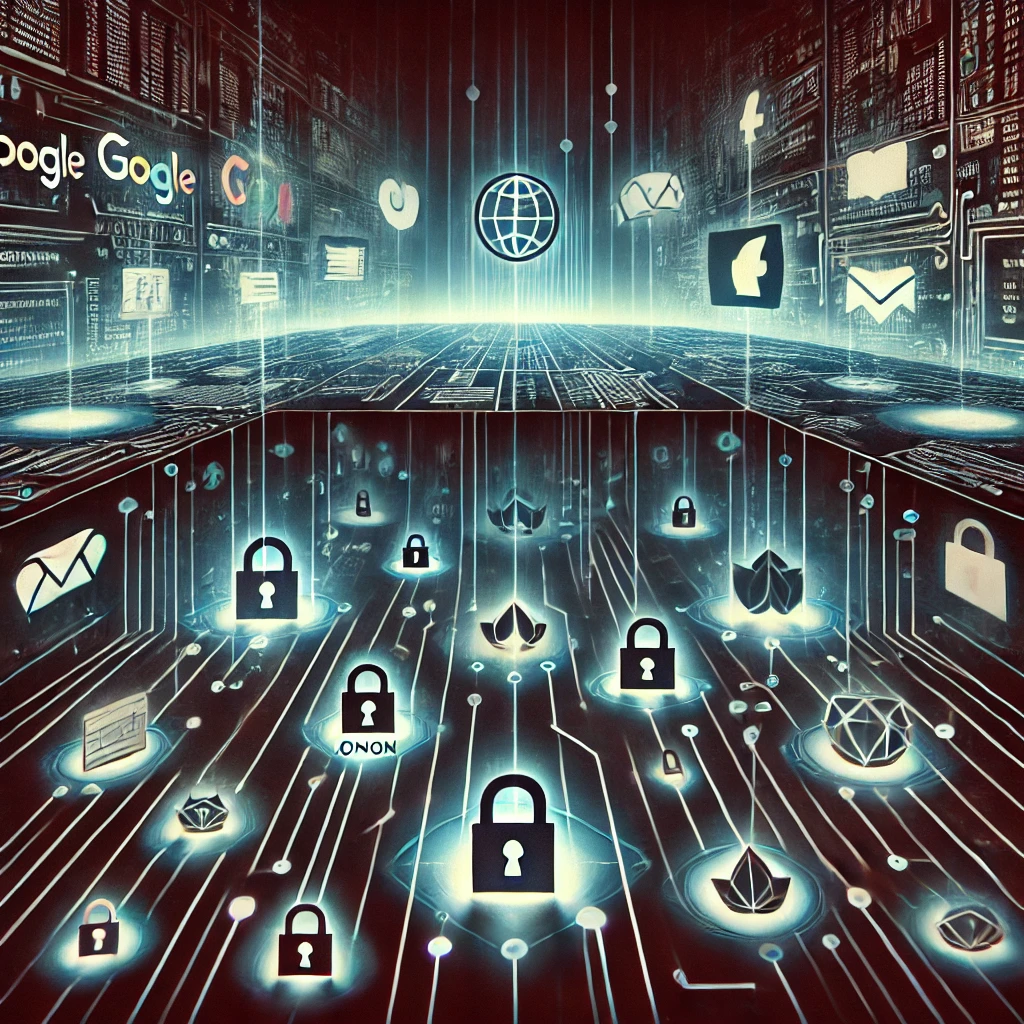What is it, how does it work, and why does it matter?
Introduction
The Dark Web is a mysterious and often misunderstood corner of the internet, hidden from the public eye. Unlike the Surface Web, which is accessible via standard search engines, the Dark Web requires specific tools and configurations to access. It is both a haven for privacy-conscious users and a hotbed for illegal activities, making it a subject of fascination and controversy.
What is the Dark Web?
The Dark Web refers to a portion of the Deep Web, a broader category encompassing all internet content not indexed by standard search engines like Google or Bing. While the Deep Web includes mundane things like private emails, online banking portals, and subscription-only content, the Dark Web consists of intentionally hidden websites accessible only via specialized software, such as the Tor browser.
The Dark Web operates using encrypted networks, making it anonymous and untraceable. Websites on the Dark Web often use the “.onion” domain, which requires routing through multiple servers to maintain privacy.
How Does the Dark Web Work?
The Dark Web relies on technologies like Tor (The Onion Router) to mask user identities and IP addresses. When a user accesses the Dark Web, their internet connection is routed through a network of volunteer-operated servers worldwide, making their activity difficult to trace.
Key Tools to Access the Dark Web
- Tor Browser: The most popular tool for accessing Dark Web content.
- I2P (Invisible Internet Project): Another anonymizing network for accessing hidden services.
- Tails OS: A secure operating system designed for privacy.
This layered encryption ensures that users and website operators remain anonymous, which is why the Dark Web has gained notoriety as a hub for illicit activity.
Uses of the Dark Web
The Dark Web is a double-edged sword. While it has a reputation for illegal activities, it also serves legitimate purposes.
Legal Uses
- Privacy Protection: Activists and journalists in oppressive regimes use the Dark Web to bypass censorship and communicate securely.
- Secure Communication: Whistleblowers use platforms like SecureDrop to share sensitive information.
- Research: Researchers explore the Dark Web to study cybercrime or develop advanced cybersecurity measures.
Illegal Uses
- Black Markets: Websites like the now-defunct Silk Road allowed users to buy and sell drugs, weapons, and other illegal items.
- Hacking Services: Cybercriminals offer hacking services and sell stolen data.
- Human Trafficking: Unfortunately, some parts of the Dark Web are used for heinous activities like trafficking.
- Fraudulent Activities: Counterfeit documents, credit card information, and more are traded.
Misconceptions About the Dark Web
Many people conflate the Dark Web with the Deep Web, but they are distinct. The Deep Web includes harmless, everyday activities such as checking emails or accessing private files stored in cloud services. The Dark Web is a specific subset requiring specialized software to access.
Not everyone on the Dark Web is a criminal. Its anonymity has made it a crucial tool for freedom of expression in repressive regimes.
How Governments and Organizations Respond
Governments and cybersecurity firms actively monitor the Dark Web to combat illegal activities. Law enforcement agencies like the FBI have conducted high-profile takedowns, such as the Silk Road closure in 2013.
Challenges in Monitoring
- Encryption: The anonymity provided by tools like Tor makes tracking users difficult.
- Decentralization: There’s no central authority overseeing the Dark Web, complicating regulation.
- Constant Evolution: Dark Web platforms quickly adapt to evade law enforcement.
Is the Dark Web Dangerous?
Accessing the Dark Web itself is not illegal, but visiting certain sites or engaging in illicit activities can have serious legal consequences.
Risks of Using the Dark Web
- Malware: Many sites are riddled with malicious software that can infect your device.
- Scams: Fraudulent schemes are rampant.
- Surveillance: Governments and hackers may monitor Dark Web activity.
To mitigate these risks, users must use caution, including robust cybersecurity measures.
Future of the Dark Web
As cybersecurity measures evolve, so does the Dark Web. Blockchain technology, cryptocurrencies, and more sophisticated encryption methods are likely to shape its future. While governments continue to clamp down on illegal activities, the demand for privacy ensures that the Dark Web will persist.
The Ethical Debate
The Dark Web’s existence raises ethical questions about privacy and security. Should anonymity be protected at all costs, or should governments have the power to regulate this space? Balancing these priorities remains a global challenge.
Conclusion
The Dark Web is a complex and multifaceted realm, representing both the best and worst of what the internet has to offer. While it has legitimate uses, its darker side poses significant challenges to law enforcement and society. Understanding the Dark Web is essential for addressing these challenges and harnessing its potential for good.




